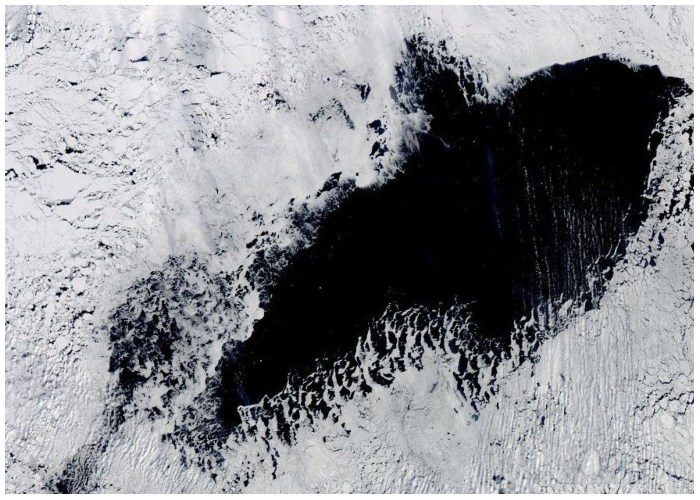For decades, the intermittent appearance of a colossal hole approximately the size of Switzerland in Antarctica’s sea ice has puzzled scientists. This phenomenon, known as the Maud Rise polynya, was first observed in the Weddell Sea during the mid-1970s. Despite its sporadic reappearances over the years, a clear explanation remained elusive until comprehensive studies conducted in 2016 and 2017 finally shed light on the underlying mechanisms. These findings have not only solved a long-standing mystery but have also opened new avenues for understanding the Antarctic environment and its global impact.
A Breakthrough in Polar Research
The significant reappearance of the Maud Rise polynya in the winters of 2016 and 2017 provided researchers with a rare opportunity to study its dynamics in detail. Utilizing data from satellites, autonomous floats, and tagged marine mammals, scientists identified that the phenomenon’s formation is intricately linked to the activity of the Weddell Sea’s circular ocean current, the Weddell Gyre. This current is instrumental in transporting warm, saline waters to the surface, which disrupts the ice formation process by lowering the surface water’s freezing point, thereby allowing the polynya to form.
Interactions of Ocean Currents and Climate
The dynamic formation of the Maud Rise polynya involves complex interactions between oceanic and atmospheric conditions. In years where the Weddell Gyre exhibits increased strength, it pushes higher amounts of warm, salty water towards the surface near the underwater Maud Rise mountain. This is further facilitated by strong winds that create a swirling effect over the sea, enhancing the upward movement of saltier water. The resultant decrease in the freezing temperature of the surrounding sea water leads to the creation of an open water region amidst the sea ice, known as a polynya.

The Global Impact of Local Phenomena
The implications of these findings extend well beyond academic interest. Polynyas play a critical role in marine biology by providing oceanic fauna with necessary air and nutrient access during the harsh Antarctic winter. Moreover, they influence global ocean currents and climate systems. The dense, cold waters formed in these open areas are capable of traveling across the world’s oceans, thus carrying cold temperatures and affecting global climate patterns. Additionally, the study highlighted potential increases in the frequency and size of these polynyas as climate change continues to amplify wind patterns and ocean currents around Antarctica.
Long-term Effects and Future Research
The Maud Rise polynya also serves as a natural laboratory for scientists studying the processes of ocean mixing and deep water formation, which are crucial components of global thermohaline circulation. Understanding these processes is vital for improving climate models and predicting future climate scenarios. Furthermore, the persistence of polynyas can influence the salinity and temperature profiles of the ocean over multiple years, underscoring their importance in long-term climatic and oceanographic studies.
A Portal to Understanding Earth’s Climate
The discovery of the driving forces behind the Maud Rise polynya is more than a resolution to a scientific enigma; it represents a critical piece in the puzzle of Earth’s complex climatic and oceanic systems. As ongoing research continues to unveil the intricate interactions within these systems, the insights gained will be pivotal in forecasting and mitigating the impacts of global climate change. Studying such phenomena is not just a pursuit of scientific knowledge but a crucial endeavor in the global effort to understand and protect our planet’s environmental future.